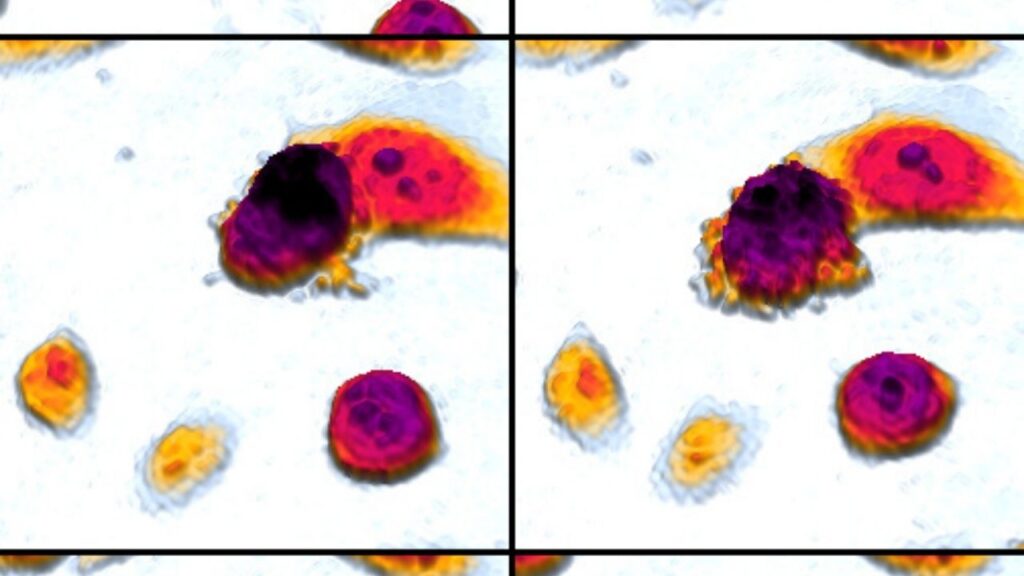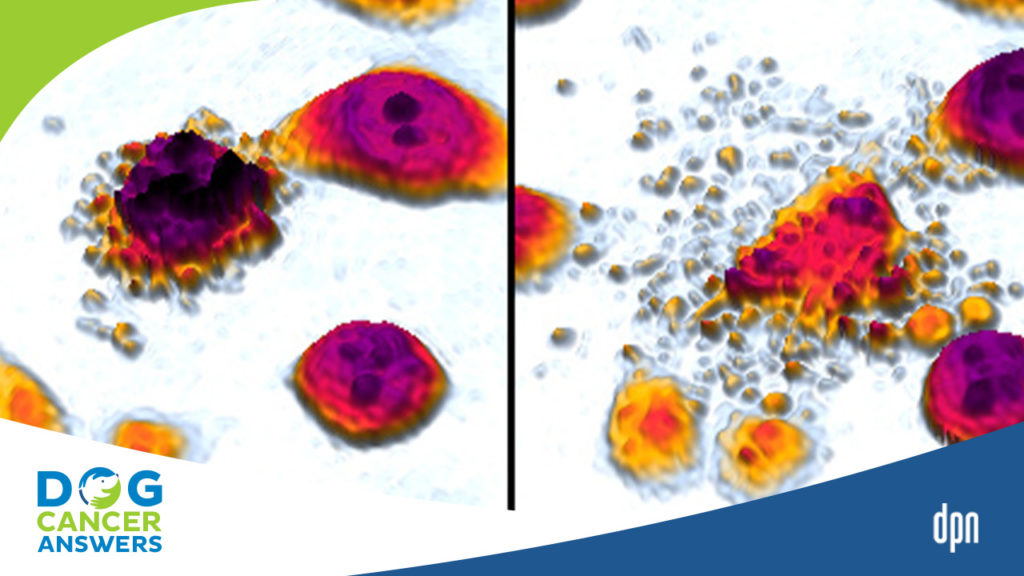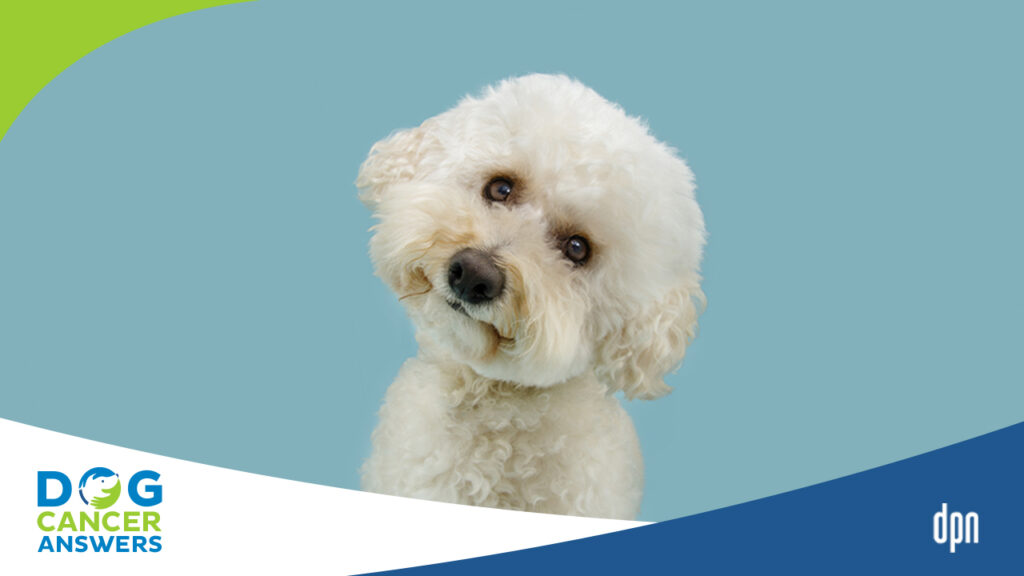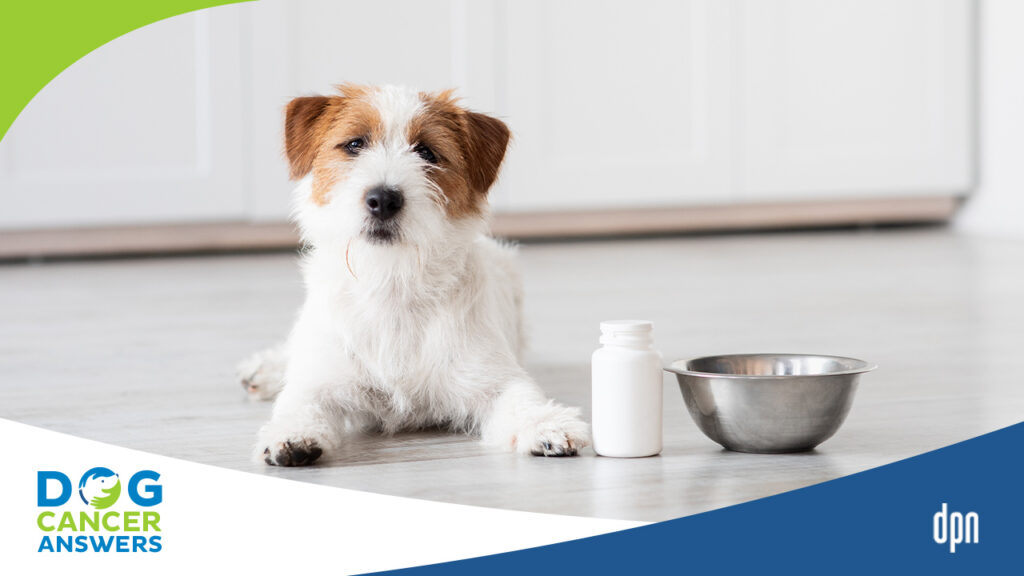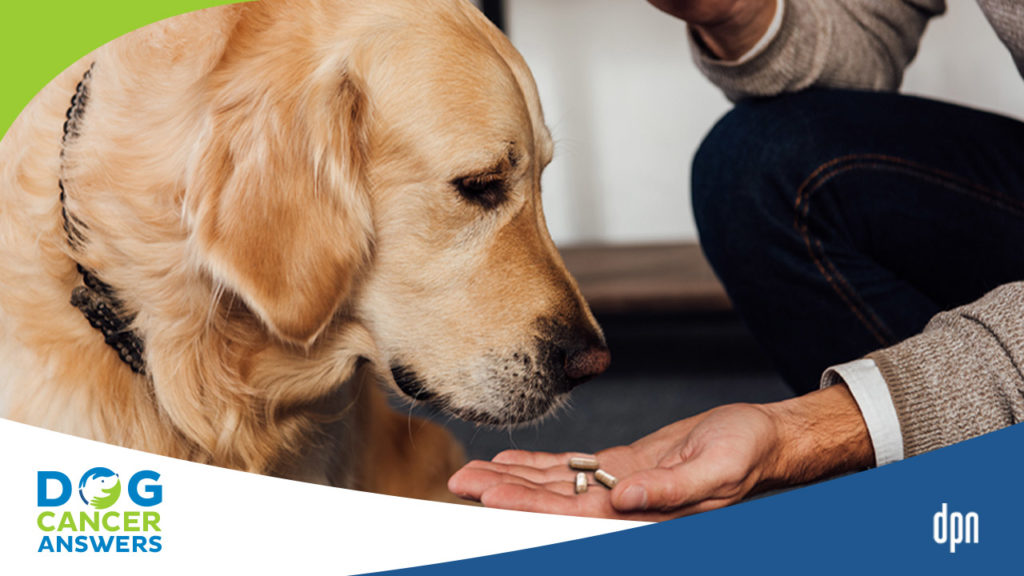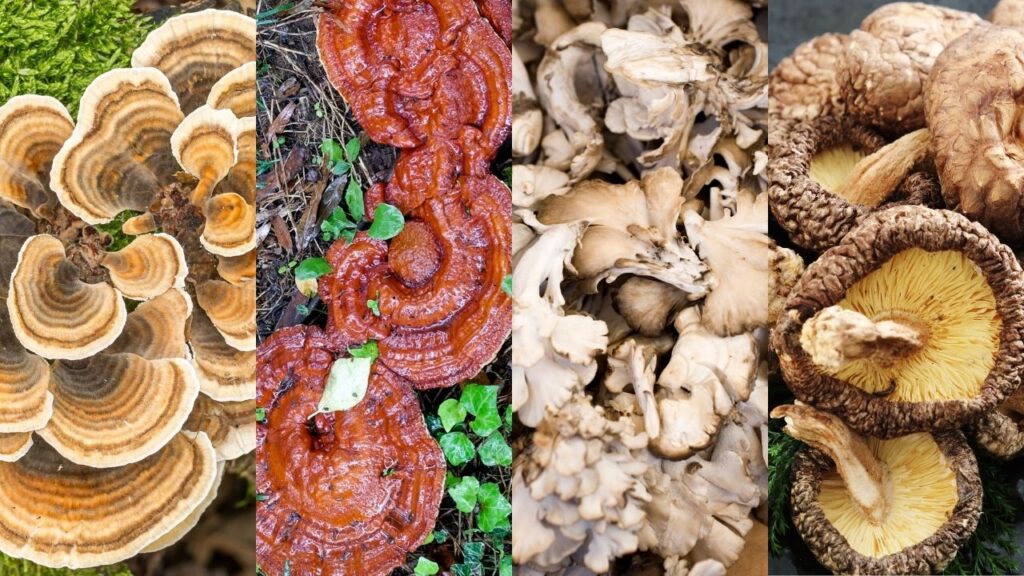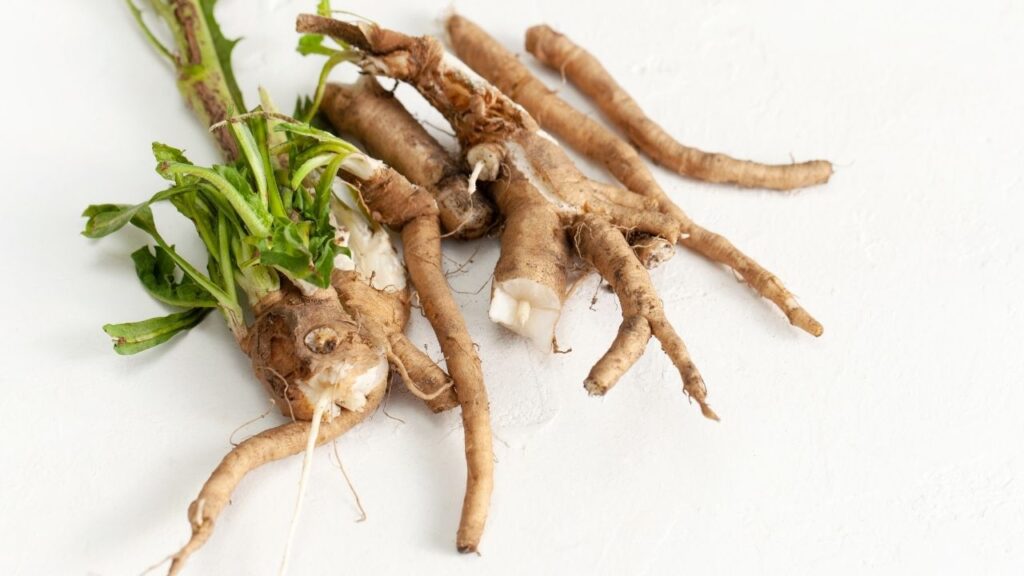Turmeric is an ancient nutraceutical with promising synergistic effects and potential efficacy. You may have heard of curcumin for dogs ... but it's not as simple as adding it as a spice to your dog's food.
Key Takeaways
- It’s safe to give dogs curcumin, although a lack of bioavailability may make it hard to get curcumin into the bloodstream, and higher doses don’t solve the problem.
- Curcumin is usually dosed at 15mg-20mg per pound of body weight, and, more is not necessarily better.
- In vitro (lab) experiments have shown that curcumin can influence cell activity by promoting cell death, inhibiting cell growth and division, and reducing angiogenesis. In vivo (in living bodies) studies have shown that curcumin is effective in treating bladder, breast, and ovarian cancers in rats and mice.
- Many veterinarians have started to embrace curcumin as a possible aid for dogs with cancer, because it is well-tolerated and generally safe to give. However, bioavailability problems should be taken into account.
- Curcumin is one of the best-known phytochemicals that comes from the turmeric plant (Curcuma longa). Turmeric root and whole food supplements contain curcumin. Curcumin can also be extracted from turmeric and put in a supplement.
Curcumin Is One of Turmeric’s Most Important Nutraceuticals
If you’ve heard of curcumin for dogs, it’s no wonder — this has been touted as a “miracle cure” for a long time. But is it?
Nutraceuticals are natural remedies that may be used on their own and/or as adjuncts to pharmaceutical options, and they are gaining momentum in use for both humans and animals. One popular nutraceutical is curcumin, a phytochemical (plant chemical) isolated from the rhizome of the plant turmeric (Curcuma longa).1
Turmeric: Super Spice
Turmeric has been used in traditional medicine for centuries and is touted as a “super spice.” Spices can provide the body with easily digestible natural compounds that are absorbed into the body intact and easily excreted.2
More than 300 different components have been identified in turmeric, with curcumin being one of the best-known ones.3
Extracted curcumin has become a compound of interest due to its perceived efficacy in treating various diseases, including cancer.4
Dr. Jessica Tartof, an integrative veterinarian, discusses curcumin's use in treating cancer and arthritis.
How Curcumin for Dogs Works
Curcumin has the ability to bind and interact with several cellular proteins.5 Theoretically, this allows it to influence numerous targets within the body.
In Vitro Studies on Curcumin
Before testing any of the clinical applications of nutraceuticals on pets, in vitro (in the lab) experiments are done to understand better how a compound like curcumin may impact cell activity.
Such experiments have shown that curcumin can prompt proapoptotic activity (cell death),6 inhibit cell proliferation (growth and division),7 and reduce angiogenesis (formation of new blood vessels that feed tumor growth).8
These in vitro experiments can be done in cells from a specific organism of interest.
In the case of curcumin, cell lines from cancers identified in dogs have been used to determine if curcumin impacts their activity. Studies done thus far have had promising results.
For example, work done with osteosarcoma cell lines in the lab found that curcumin-activated proteins associated with cell death. They also decreased cell viability and reduced the expression of mutated tumor suppressor genes that were not functioning properly.9,10
Another study investigating cell lines from canine mastocytoma and mammary cancer found that turmeric extract significantly increased apoptotic cells after 36 hours.1
These effects were magnified when the extract was used in conjunction with rosemary extract, suggesting that synergistic effects may play a large role in the effectiveness of a compound like curcumin.1
Rodent Studies on Curcumin
In vitro studies are useful, but many things kill cancer cells in a petri dish. How do they work in living bodies? That’s the next step in research. Studies performed in vivo (in live organisms) allow researchers to understand the impacts of a compound on live animals.
These are first typically done in “model organisms” like mice and rats. These studies in lab animals can help researchers understand how a therapy may (or may not) work in other animals.
Curcumin has been the subject of a number of in vivo studies and has showed efficacy in treating bladder cancer in rats,11 breast cancer in mice,12 and ovarian cancer in mice.13
Once better understood in model organisms, and if a therapy shows promise, researchers may seek to understand how a molecule may impact cells in the target animal of interest, like a family dog.
Dog Studies on Curcumin
More research in curcumin use in live dogs with cancer is needed,1 but current publications have revealed helpful insights surrounding bioavailability and effectiveness.
Curcumin Lacks Bioavailability
Unfortunately for use as a therapy, turmeric and its compounds, including curcumin, are not well absorbed into the body’s circulatory system. This lack of bioavailability presents one of the main challenges in the clinical application of curcumin.
Less than 1% of orally administered curcumin will be absorbed in the intestinal tract, and even less will reach the bloodstream.
Less than 1% of orally administered curcumin will be absorbed in the intestinal tract, and even less will reach the bloodstream.14
Intravenous Curcumin Increases Bioavailability
Some ideas to increase bioavailability include changing formulas, administration schedules, and delivery methods.
For example, LipoCurc™ is a synthetic curcumin formula that can be administered intravenously instead of orally, greatly increasing its bioavailability. In one study of 11 dogs with cancer, LipoCurc™ was found to have inhibitory effects on cell proliferation and angiogenesis.15
Synergistic Blending Increases Bioavailability
As mentioned above, curcumin interacts with many different compounds and may be able to “combine” forces with other compounds to amplify its effects. Harnessing this kind of synergistic behavior may assist in overcoming the issue of bioavailability.
For example, in a study that examined the impacts of turmeric extract on dog cancer cell lines, the addition of rosemary extract to the turmeric extract caused a significant increase in the cellular accumulation of curcumin by 30% to 480%, depending on cell line type.1
Studies on Curcumin in Humans
Curcumin has also been studied with humans in many cancer types and has advanced to Phase I and II clinical trials. A compound that has advanced this far through the scientific investigation process is more likely to help than one which never advances beyond mice or petri dish trials.
Hopefully, the results of these many trials will further elucidate how curcumin can best be harnessed to combat cancer. However, randomized control trials are still needed before we can be totally confident about what curcumin does and does not do.22
Common Uses for Curcumin
Broadly, curcumin exhibits anti-inflammatory activity, which can assist with treating cancer and increasing your dog’s comfort.23
Curcumin will likely make its biggest impact in treating complicated cancers with low survival rates. New therapeutic strategies are certainly needed for common cancers with low survival rates.24 Curcumin may be such a strategy, given the positive results found in in vitro experiments with dog osteosarcoma cell lines.1,10,11
Curcumin may also benefit cancers commonly treated with chemotherapy or radiation.
- Curcumin may be able to amplify the effect of chemotherapy due to its known synergistic effects, while simultaneously helping to overcome drug resistance, support the body through periods of increased stress, and help eliminate toxic waste products.25,26
- Numerous studies also suggest that curcumin can increase the radiosensitivity of cancer cells by acting on several diverse molecular targets and impacting multiple cellular signaling cascades.27
Many veterinarians are willing to try curcumin with dogs with cancer if only for the potential synergistic support it offers to reduce side effects while on chemo or radiation.
Is Curcumin Toxic to Dogs?
Overall, dogs generally tolerate curcumin supplements with few side effects. Concentration and method of administration likely play a large role in the side effects experienced.1
Side effects that have been noted for oral formulations are gastrointestinal upset and include:
- Decreased appetite
- Mustard-colored stools
- Sporadic vomiting28
Intravenous administration of curcumin in a formula such as LipoCurc may also have side effects. One study has used this method to determine its possible side effects by intravenously administering 10mg of LipoCurc™ per kilogram to 11 dogs over 8 hours once a week within a period of 28 days.15
The authors broadly concluded that the dogs were able to tolerate the dosage provided within the study’s time frame, but noted the following:
- Three dogs had anemia
- Two dogs had decreasing HCT (% of red blood cells)
- One dog had vomiting
- One dog had a mild allergic reaction
- Four dogs died during treatment (Note that these dogs had late-stage cancer, but LipoCurc-related toxicity cannot be ruled out.)
- Zero dogs reached complete regression of their respective disease.
Can Curcumin Be Given with Other Supplements or Drugs?
Curcumin extract can be combined and used with other nutraceuticals, such as rosemary. One study found that the synergistic properties of curcumin allowed it to be boosted in efficacy by the rosemary extract.1
Another study examined the utility of a dog biscuit with five nutraceuticals, including curcumin, resveratrol, ellagic acid, genistein, and quercetin. The combination of these together was found to be safe at the dosage examined.
Curcumin extract can also be combined with chemotherapy. Again, the synergistic properties of curcumin make it a potential booster of chemotherapeutic drugs, allowing for lower concentrations to be administered and ultimately minimizing the negative side effects associated with chemotherapy.29
Curcumin is also a known adaptogen capable of supporting the body through periods of stress, as is often brought on with chemotherapy, and can help remove toxic waste products which may accumulate from chemotherapeutic drugs in the body.26
Curcumin can also be combined with radiation therapy. In fact, it’s been demonstrated as having several benefits, such as increasing the sensitivity of cancer cells to radiation, across a wide range of cancer types and stages.27
Please ask your veterinarian about giving your dog curcumin before doing so.
When Not to Use Curcumin for Dogs
Curcumin generally seems safe and to combine well with other treatments. However, you should always consult with your veterinarian to ensure that it is safe to add curcumin to your dog’s current regimen, particularly because synergistic effects with other medications and supplements may harm your dog.
How to Give Curcumin
Several commercial curcumin options are on the market, ranging from powders to chews and softgels. Products typically recommend a once or twice-a-day dosing schedule.
Most products intended for use in dogs dose at 15mg-20mg per pound of body weight per day. This is sometimes spread out over the day, likely to try to make it more bioavailable.
Asking your veterinarian about products and brands they trust and have seen benefits with is always a good idea, especially with popular supplements.
Integrative veterinarian Dr. Jessica Tartof explains where she starts when it comes to dogs with cancer.
“Golden Paste” of Curcumin
Some people try a home pharmacist route, with at-home recipes that claim to increase the bioavailability of curcumin via the creation of a “golden paste.”
Most paste recipes call for turmeric to be dissolved into water with an agent containing fats, like lecithin, coconut oil, and black pepper, then boiled.2,16,17,18
Heating the mixture to create the golden paste supposedly increases the solubility of curcumin, which in turn is thought to translate to an increase in bioavailability.
- One study found that heating curcumin for 10 minutes increased its solubility 12-fold and did not reduce the integrity of the compound itself.20
- However, no published research shows that heat-solubilized curcumin has greater bioavailability, as these recipes claim.
- Other studies testing the bioavailability of 98.5% native turmeric point out that even though heating the mixture makes it easier to combine, it does not increase solubility.21
It’s easy to understand why non-pharmacists would assume a mix of curcumin that seems more dissolved might be more easily absorbed by the body. Unfortunately, chemistry is not quite that simple.
Some recipes recommend adding black pepper to the golden paste. This adds in piperine, black pepper’s key alkaloid. This may have more evidence to help. One study found that curcumin bioavailability increased 2,000% after it was provided orally with piperine. Another study detected curcumin in the tissue of rats for a significantly longer time when it was given with piperine than without.18,19
Adminstering Curcumin
Curcumin is typically administered orally. Dogs usually don’t mind the taste of curcumin, but if they absolutely refuse the supplement, you could fill a turkey baster with water and immediately dispense it into your dog’s mouth after you place the curcumin supplement into their mouth.2 This will encourage them to swallow and avoid spitting the supplement out.2
Recall that oral administration, although by far the most common, may be problematic because less than 1% of orally administered curcumin will be absorbed through the intestinal tract, with even less reaching the bloodstream to circulate throughout the body.14
If you use a golden paste, it’s important to remember that claims of increased bioavailability in using this method aren’t necessarily well supported.
A drug delivery system that bypasses oral consumption will likely be needed to improve efficacy, such as the above-mentioned intravenous formulation, LipoCurc™. This particular delivery system was provided at a concentration of 10mg per kg over 2 hours.30
This product is difficult because a veterinary professional must give it.
Don’t Overdo Curcumin Supplements
Curcumin is a popular nutraceutical. It’s in many standalone supplements, and also many blends.
Regardless of concerns over bioavailability and effectiveness, there’s no reason to give your dog multiple curcumin-containing supplements. Sometimes, our love for our dogs and a strong desire to support them in their cancer treatment can go into hyperdrive and do more harm than good.
Very few of us have the pharmacological training or knowledge to create high-quality, effective supplements at home, or understand how different supplements interact.
With all the options out there, it’s best to talk to your veterinarian and find a reputable well-supported product containing curcumin to give to your dog instead of trying mixes and combinations of supplements and recipes at home.
What If I Miss a Dose?
In vivo research suggests that canine osteosarcoma cells are more sensitive to curcumin exposure with time, so missing a dose may decrease efficacy.10
However, if you miss a dose, do not “double dose” your dog to catch up. Some curcumin supplements are potent, and giving your dog too much at once could be toxic (or cause severe gastrointestinal upset).
If you suspect that toxic levels have been reached for your dog, call your veterinarian immediately.
Storage and Handling
Most curcumin supplements can be stored in a cool and dry place, but some may need to be refrigerated.28 Similarly, paste forms of curcumin made by mixing water and curcumin extract powder may require refrigeration with a shelf life of about two weeks.
Curcumin is typically bright gold in color and may stain fabrics, so take care when handing.
Our Take on Curcumin
There are many tumor types in canine oncology, and curcumin may work differently for all of them. It may help boost your dog’s current cancer treatment regimen, but most research has only shown efficacy in cancer cells in the lab. Its reduced bioavailability makes it difficult to give impactful oral doses, and strategies that claim to increase bioavailability, such as making a “golden paste,” aren’t scientifically supported.
Fortunately, preliminary research on effective delivery methods is growing and promising. Despite the potential lack of efficacy in active cancer in your dog, the minimal negative side-effects associated with curcumin and its promising synergistic effects make this supplement worthy of chatting with your vet about.
Dr. Demian Dressler reviews his recommendations for supplements for dogs with cancer.
- Levine CB, Bayle J, Biourge V, Wakshalg JJ. Cellular effects of turmeric root and rosemary leaf extract on canine neoplastic cell lines. BMC Vet Res 2017;13:388.
- Dressler D, Ettinger S. The Dog Cancer Survival Guide. Maui Media, LLC. 2011.
- Li S, Yuan W, Deng G, Wang P, Yang P, Aggarwal B. Chemical composition and product quality control of turmeric (Curcuma longa L.). Pharm Crops. 2011;2:28–54.
- Newman DJ, Cragg CG, Snader KM. The influence of natural products upon drug discovery. Nat Prod Rep 2000;17:215-234.
- Sharma RA, McLelland HR, Hill KA, et al. Pharmacodynamic and pharmacokinetic study of oral curcuma extract in patients with colorectal cancer. Clin Cancer Res 2001;7:1894–1900.
- Woo JH, Kim YH, Choi YJ, et al. Molecular mechanisms of curcumin-induced cytotoxicity: induction of apoptosis through generation of reactive oxygen species, down-regulation of Bcl-XL and IAP, the release of cytochrome c and inhibition of Akt. Carcinog 2003;24(7):1199–1208.
- Liu Q, Loo WT, Sze SC, Tong Y. Curcumin inhibits cell proliferation of MDA-MB-231 and BT-483 breast cancer cells mediated by down-regulation of NFkappaB, cyclinD and MMP-1 transcription. Phytomed 2009;16(10):916–922.
- El-Azab M, Hishe H, Moustafa Y. et al. Anti-angiogenic effect of resveratrol or curcumin in Ehrlich ascites carcinoma-bearing mice. Eur J of Pharmaco 2011;652(1–3):7–14.
- Aşici GSE, Kiral F, Bayar I, Bildik A, Ulutaş PA. Cytotoxic and Apoptotic Effects of Curcumin on D-17 Canine Osteosarcoma Cell Line. Kafkas Üniversitesi Veteriner Fakültesi Dergisi 2021;27(4).
- Soares NP, Nepomuceno LL, de Sousa Cruz V, et al. Curcumin promotes extrinsic apoptosis in canine osteosarcoma cells. Res Soc Dev 2020;9(10):e7289109231-e7289109231.
- Tian B, Wang Z, Zhao Y, et al. Effects of curcumin on bladder cancer cells and development of urothelial tumors in a rat bladder carcinogenesis model. Cancer Lett 2008;264(2):299–308.
- Bachmeier B, Nerlich AG, Iancu CM, et al. The chemopreventive polyphenol Curcumin prevents hematogenous breast cancer metastases in immunodeficient mice. Cell Phys Biochem 2017;19(1–4):137–152.
- Lin YG, Kunnumakkara AB, Nair A, et al. Curcumin inhibits tumor growth and angiogenesis in ovarian carcinoma by targeting the nuclear factor-kappaB pathway. Clin Cancer Res 2007;13(11):3423–3430.
- Helson L. Curcumin (diferuloylmethane) delivery methods: a review. Biofactor 2013;39(1):21–26.
- Withers S, York D, Johnson E, et al. In vitro and in vivo activity of liposome-encapsulated curcuming for naturally occurring canine cancers. Vet Comp Oncol 2018;16(4):571-579.
- Dressler D. More on curcumin and dog cancer. Dog Cancer Blog. December 26, 2018. Accessed on December 13, 2022. https://www.dogcancerblog.com/articles/full-spectrum-cancer-care/nutraceuticals/more-on-curcumin-and-dog-cancer/.
- No author. The benefits of gold paste to dogs and cats. Camp Canine. March 8, 2021. Accessed December 12, 2022. https://campcaninesb.com/the-benefits-of-golden-paste-to-dogs-and-cats/.
- Prasad S, Tyagi AK, Aggarwal BB. Recent developments in delivery, bioavailability, absorption and metabolism of curcumin: the golden pigment from golden spice. Cancer Res Treat 2014;46(1):2-18. doi:10.4143/crt.2014.46.1.2
- Suresh D, Srinivasan K. Tissue distribution & elimination of capsaicin, piperine & curcumin following oral intake in rats. Indian J Med Res 2010;131:682-691.
- Kurien BT, Scofield RH. Oral administration of heat-solubilized curcumin for potentially increasing curcumin bioavailability in experimental animals. In J Cancer 2009;125(8):1992-1993.
- Aggarwal BB. Response to Kurien and Scofield: solubility and bioavailability of curcumin. Trends Pharmacol Sci 2009;30(7):335.
- Gupta SC, Patchva S, Aggarwal BB. Therapeutic roles of curcumin: lessons learned from clinical trials. AAPS J 2013;15(1):195–218.
- Chen J, He ZM, Wang FL, et al. Curcumin and its promise as an anticancer drug: An analysis of its anticancer and antifungal effects in cancer and associated complications from invasive fungal infections. Eur J of Pharmaco 2016;772,33–42.
- Szewczyk M, Lechowski R, Zabielska K. (2015). What do we know about canine osteosarcoma treatment? – Review. Vet Res Commun 2015;39(1):61-67.
- Alkan FU, Anlas C, Cinar S, et al. Effects of curcumin in combination with cyclophosphamide on canine mammary tumour cell lines. Veterinární medicína 2014;59(11):553.
- Sak K. Chemotherapy and dietary phytochemical agents. Chemotherapy Res Prac 2012;282570:doi:10.1155/2012/282570.
- Sak K. Radiosensitizing potential of curcumin in different cancer models. Nutr Cancer 2019;DOI:10.1080/01635581.2019.1681480.
- Kondratyuk TP, Adrian JAL, Wright B, et al. Evidence supporting the conceptual framework of cancer chemoprevention in canines. Sci Re. 2016:6(1):1-13.
- Menendez, J.A., del mar Barbacid, M., Montero, S., et al. Effects of gamma-linolenic acid and oleic acid on paclitaxel cytotoxicity in human breast cancer cells. Eur J Cancer 2001;37:402–413.
- Helson L, Bolger G, Majeed M, Vcelar B, Pucaj K, Matabudul D. Infusion pharmacokinetics of Lipocurc (liposomal curcumin) and its metabolite tetrahydrocurcumin in Beagle dogs. Anticancer Res 2012;32(10):4365–4370.
Topics
Did You Find This Helpful? Share It with Your Pack!
Use the buttons to share what you learned on social media, download a PDF, print this out, or email it to your veterinarian.
